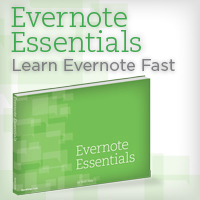
It’s been a few weeks since I decided to wholly abandon reading RSS feeds and focus more heavily on books and hand-picked articles to read.
In short, it’s going phenomenally well. But that’s a story for another blog post.
Today, I want to share a bit about what I’ve been reading recently, using both my Kindle and the Audible app on my iPhone.
It’s been such a pleasure, you guys. Nothing against blog posts or whatever, but coming from somebody who has written something that at least approximates a real book, I can (to some extent) empathize with the authors of these works. Taking a big idea and turning it into a big, complete collection of thoughts and words and ideas is a massive undertaking. I think this appreciation makes consuming these books all the more enjoyable. If you ask me, anybody who can go through the toil of actually producing a book deserves some measure of respect.
Anyway, enough gushing.
From the list of books I’ve read so far this year, I’ve compiled for you a summer reading list containing some of my favorites. I can’t confidently say you’ll appreciate all of them as much as I have, but if any of them interest you, I’d highly recommend giving them a try.
And now, in no particular order…
(Oh, and I should point out that I listened to a few of these as audio books, but I’m still going to use words like “read” below because, frankly, I like annoying the pedants.)
Brett’s Summer Reading List for You Make Happy Brain
- Platform by Michael Hyatt — For those of us who have some weird thing inside us that we really feel like the world—or, at least, certain parts of it—would do well to hear, this is a step-wise guide to building the platform from which you’ll deliver your message. It’s a nice mixture of tactics and attitudes from a guy who has the status and the credentials to speak intelligently on the topic. And it’s a hell of a good read.
- Steve Jobs by Walter Isaacson (audio) — Given the decidedly mixed reaction to this book from the tech community, I was hesitant to give it the 20-some-odd hours it would take to complete. I’m glad I did. This book will not only give you a pretty thorough tour of the history of Apple, NeXT and Pixar, but also an intimate glimpse into what Steve Jobs was like as a person and how his commitment to great art manifested itself as a combination of earth-rattling innovation and absolutely despicable treatment of others. I don’t necessarily believe that the former absolves him of the latter, but I do feel like I understand the guy a good bit more than I did.
- My Life in Advertising by Claude Hopkins — As somebody who has a little Internet business, I’ve been trying to learn a bit more about the fundamentals of business, advertising, marketing and sales (sorry if that makes you nauseous or whatever). This book is the “professional autobiography” of a guy who, near as I can tell, took the Western understanding of advertising and freaking reinvented it. Lots of marketing people I know cite this author (and this work, in particular) as required reading for anybody who cares to learn about the topic. It was fascinating and will certainly be one I’ll reread at least once.
- What it is Like to Go to War by Karl Marlantes (audio) — I’ll admit it here: I find a great deal of allure and mystery in stories of war, the military, etc. Whatever, it’s a thing I do. I’ve read a couple other memoirs this year by military guys who simply recounted their experiences in training, combat and life before and after. This book, in rather stark contrast, explores the emotional aspects of what it’s like to actually be a combatant who kills others in battle and watches his friends die there. You’ll probably feel a bit drained after reading it, but it made for a hell of an interesting read.
- Turning Pro by Steven Pressfield — Let me begin by saying that I would drink this author’s bathwater if I could. I’ve read several of books, including the seminal The War of Art (if you haven’t read it, there are few books that I’d recommend more highly). Turning Pro is, in essence, the practical application of the concepts described in The War of Art. The “professional” approach to work, creativity and one’s craft is, I think, a pretty revolutionary idea in an age where “passion” (forgive me) and the like are worshipped as the only pure motivation for doing great things. I tore through this book while on vacation recently and it absolutely delivered. For a guy who feels there might just be a bit too much inspiration floating around these days, this is one of those books that had me clamoring to take my shit to the next level. If I had to pick a favorite book in this list, this would be it.
- The $100 Startup by Chris Guillebeau — Written by my good friend, this is the instruction manual for folks looking to make a real run at starting their own business. Combining oodles of anecdotes of people who have turned lemons into lemonade and fleeting moments of inspiration into full-time careers, this is a must-read for anybody who thinks starting something on their own is too hard or simply out of reach. A great read that will make you realize that, just maybe, you can actually do something awesome for far less money than you think. The trade-off, of course, is that it takes work. (Full disclosure: I’m profiled in this book. You should still read it, though, as I can guarantee that you won’t see any pictures of my scary, unshaven countenance. I wasn’t compensated for my participation other than receiving a few courtesy copies of the hardcover. And I paid for the Kindle version.)
- The Personal MBA by Josh Kaufman — I didn’t finish college. In fact, you could make a compelling argument that I didn’t really begin, either. I’m not particularly interested in spending a frickton of time and money earning a graduate degree from a business school, but I’m interested in learning about business and related topics. This book is touted by many, including the author, as a good drop-in replacement for such an expensive educational pursuit. In a nut, it breaks down dozens and dozens of business concepts into manageable, concise overviews that build on one another. Topics like finance, marketing and systemization of business processes are clearly explained enough that even a big dumb animal like myself can understand. If you’re interested in understanding business, this one is worth your time and cheddar.
- The Education of Millionaires by Michael Ellsberg (audio) — For my generation, attending college after High School was, and still is, the default route for most kids. Historically, it was held that going to college will help ensure that you get a good job and make enough money to have a boat or something. This book takes a balanced look at the value of education as it relates to “success” in life. While it doesn’t absolutely vilify higher education, it does prompt the reader to weigh the cost and benefit of such an education. I’m a big fan of this approach. As I said, I didn’t go to college and don’t really intend on ever earning a degree because I’ve managed to build a life for my family and I that doesn’t require it. I think that many people could also find this to be true if they consider what they want their life to look like instead of simply accepting conventional wisdom. (Side note: if possible, skip the audio version of this book and read it instead; the narration of the text in Audible’s version is pretty awful)
Anyway, I hope you’ll check out some of these. They’re all quite good.
I’d love to hear about a book you’ve recently loved. Ping me on Twitter and let me know, won’t you?
(Yet Another Italicized Note Thing: The book links above are affiliate links. If that makes your tummy hurt, just Google for the titles and use those links when buying.)
Image credit: druclimb


